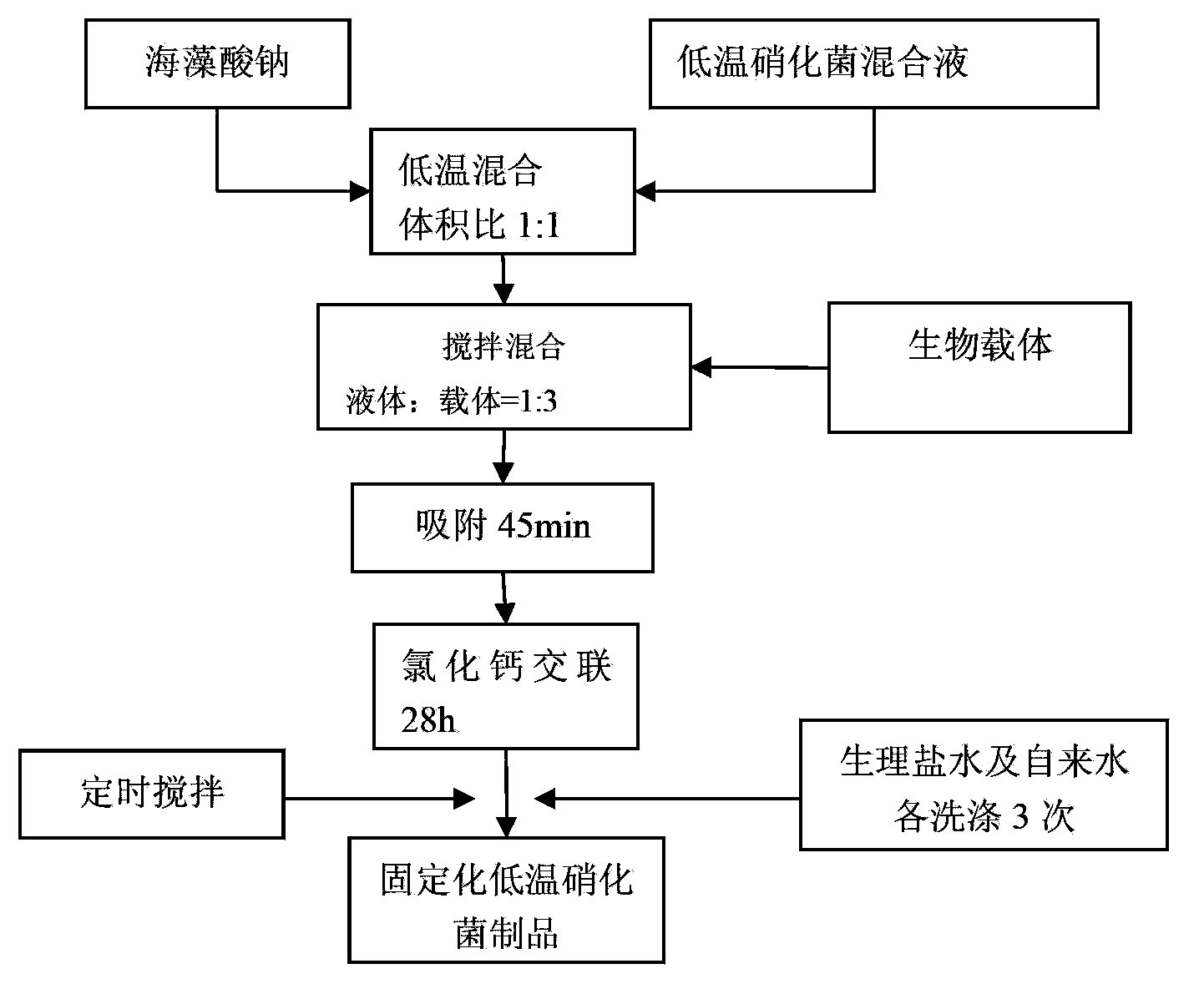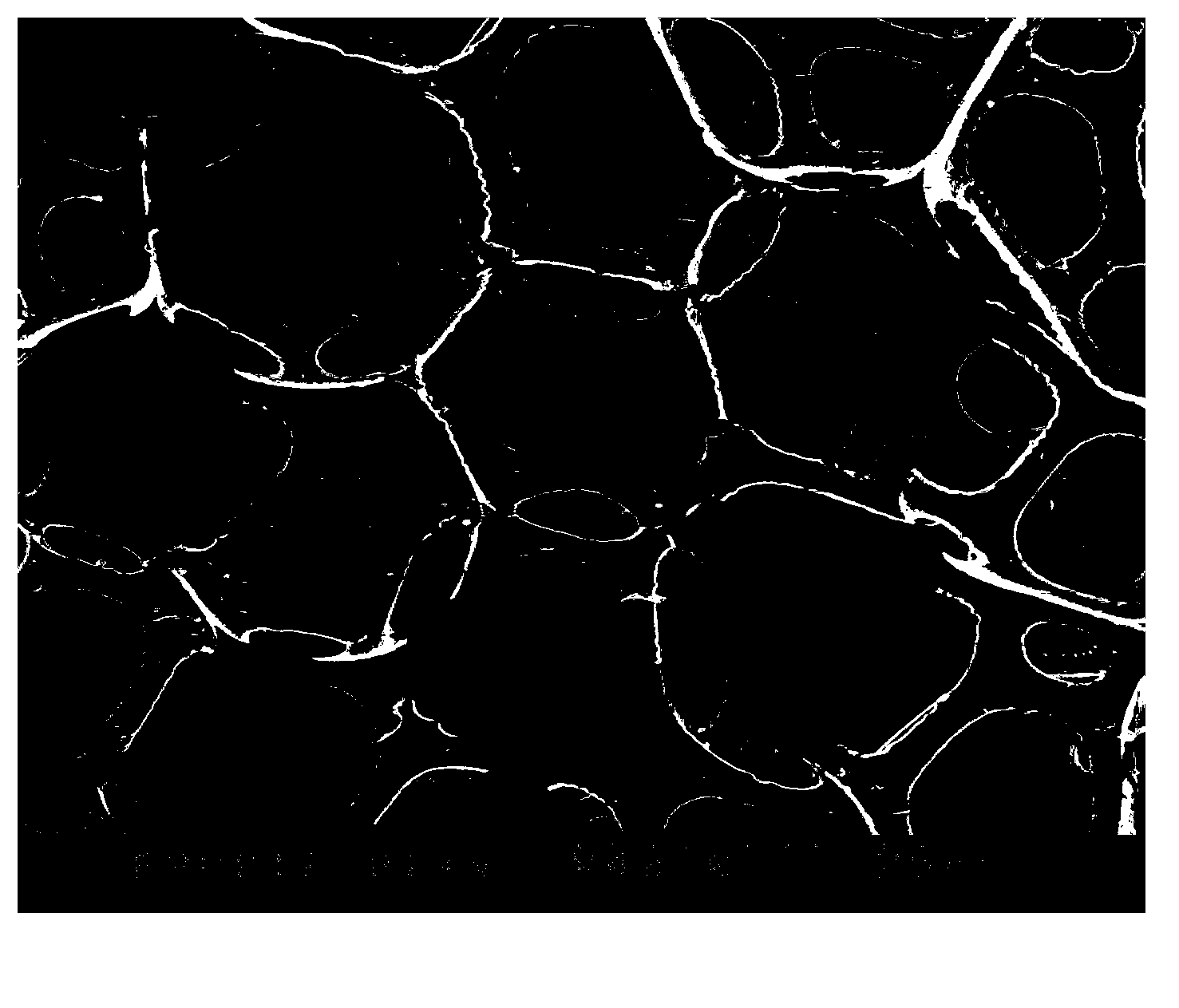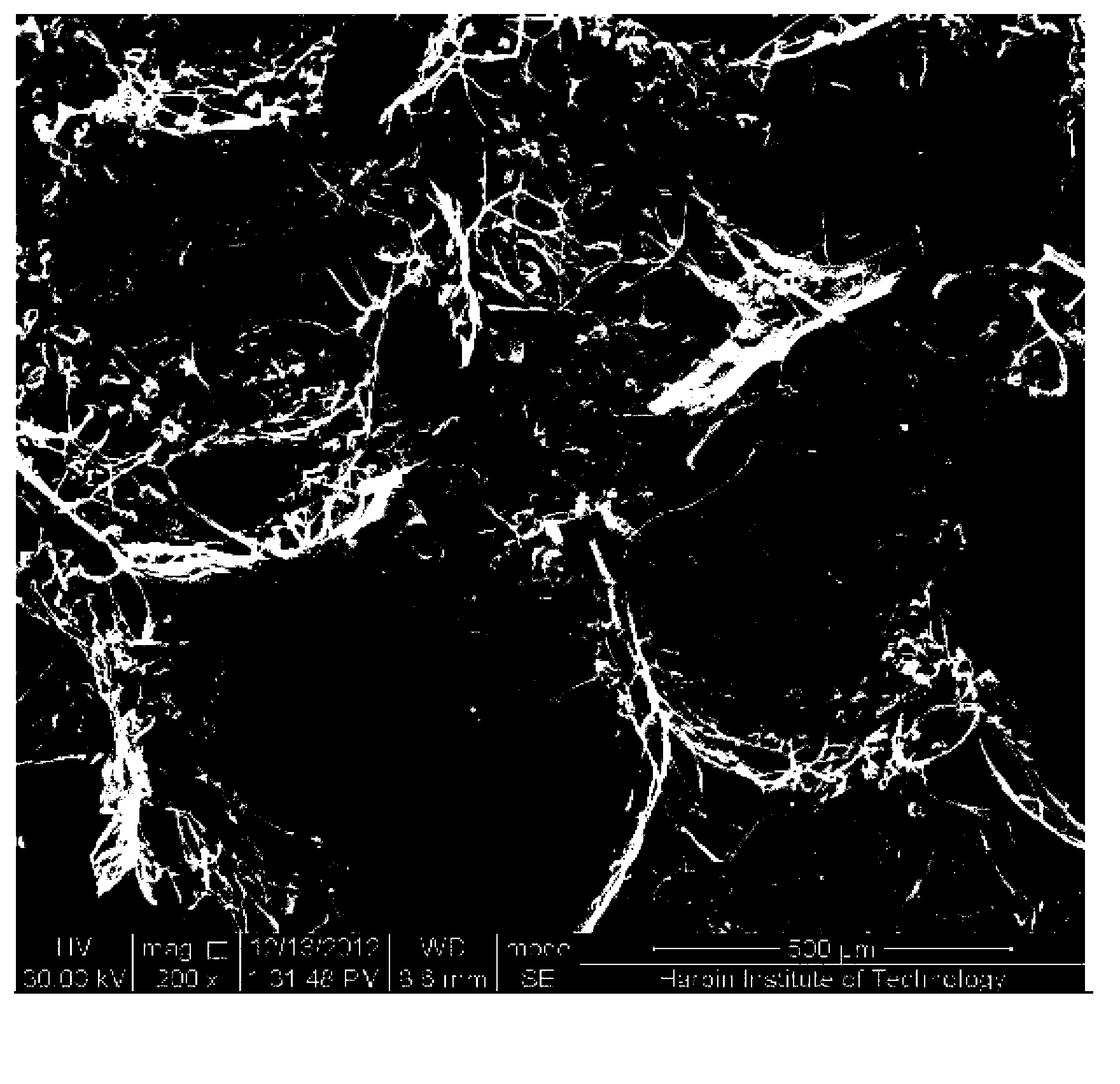Immobilized low-temperature nitrobacterium and application thereof in treating low-temperature ammonia-nitrogen wastewater
A technology of ammonia nitrogen wastewater and nitrifying bacteria, applied in the direction of fixing on/in organic carriers, biological water/sewage treatment, water/sludge/sewage treatment, etc., can solve the problem of deteriorating water body ecological environment, water body eutrophication, No problems such as treatment effect, to achieve the effect of avoiding the loss of bacteria, improving microbial activity, and convenient reference
- Summary
- Abstract
- Description
- Claims
- Application Information
AI Technical Summary
Problems solved by technology
Method used
Image
Examples
Embodiment 1
[0024] The preparation of embodiment 1 immobilized low-temperature nitrifying bacteria
[0025] (1) Acclimatization of low-temperature nitrifying strains: put the activated sludge from Harbin Taiping Sewage Treatment Plant in a laboratory biochemical incubator and cultivate it at 6~10°C. The main components of the medium are: COD (glucose) 350mg / L, NH 3 + -N(NH 4 CI) is 75mg / L, NaHCO 3 650mg / L, and add a nutrient solution composed of trace elements, so that the final concentration of the added trace elements is CaCO 3 1.0g / L, K 2 HPO 4 0.75g / L, MnSO 4 0.01g / L, MgSO 4 4H 2 00.03g / L; After 3 months of acclimatization and maturity of low-temperature resistant nitrification sludge, the supernatant of domesticated and mature nitrification sludge was separated by a flat-plate streak separation method, and the culture medium used for the isolation of nitrosative bacteria was the improved Stephenson (Stephenson) medium, nitrifying bacteria were isolated using nitrifying bact...
Embodiment 2
[0028] The performance test of embodiment 2 immobilized low-temperature nitrifying bacteria
[0029] 1. Electron microscope observation results
[0030] The surface structure characteristics of the obtained immobilized microbial preparation product (prepared according to the method of Example 1) of the present invention were observed by electron microscope.
[0031] Experiments have proved that the physical and chemical characteristics of the immobilized carrier of the present invention are that the specific surface area increases and can reach 20000m 2 / m3 , Strong water absorption capacity, can absorb 250% of its own weight of water, adjustable density, sedimentation speed, charged load and conductivity. Carrier scanning electron microscope pictures such as figure 2 shown. Electron microscope picture (200×) of the finished product of biosorption mixed immobilized nitrifying bacteria image 3 shown. Electron microscope pictures (6000×) of the finished product of biosorp...
Embodiment 3
[0043] Embodiment 3 Application of the immobilized low-temperature nitrifying bacteria of the present invention in the treatment of low-temperature ammonia-nitrogen wastewater
[0044] The determination of the ammonia nitrogen removal rate of fixed low-temperature nitrifying bacteria is carried out in a small laboratory test to simulate the actual operating conditions of the sewage treatment plant: the cycle operation time is set to 4h, and the time allocation of each stage is generally: water intake + stirring for 20 minutes, water intake + stirring + aeration for 40 minutes, stirring + aeration for 80 minutes, sedimentation for 50 minutes, and drainage for 50 minutes. The test adopts a uniform aeration method, and the aeration volume of each cycle remains unchanged. The end DO of the aeration period is used as the control target. During the test, the end DO is generally controlled to be not less than 4mg / L. The small test device adopts variable volume operation, the MLSS of ...
PUM
 Login to View More
Login to View More Abstract
Description
Claims
Application Information
 Login to View More
Login to View More - R&D
- Intellectual Property
- Life Sciences
- Materials
- Tech Scout
- Unparalleled Data Quality
- Higher Quality Content
- 60% Fewer Hallucinations
Browse by: Latest US Patents, China's latest patents, Technical Efficacy Thesaurus, Application Domain, Technology Topic, Popular Technical Reports.
© 2025 PatSnap. All rights reserved.Legal|Privacy policy|Modern Slavery Act Transparency Statement|Sitemap|About US| Contact US: help@patsnap.com



